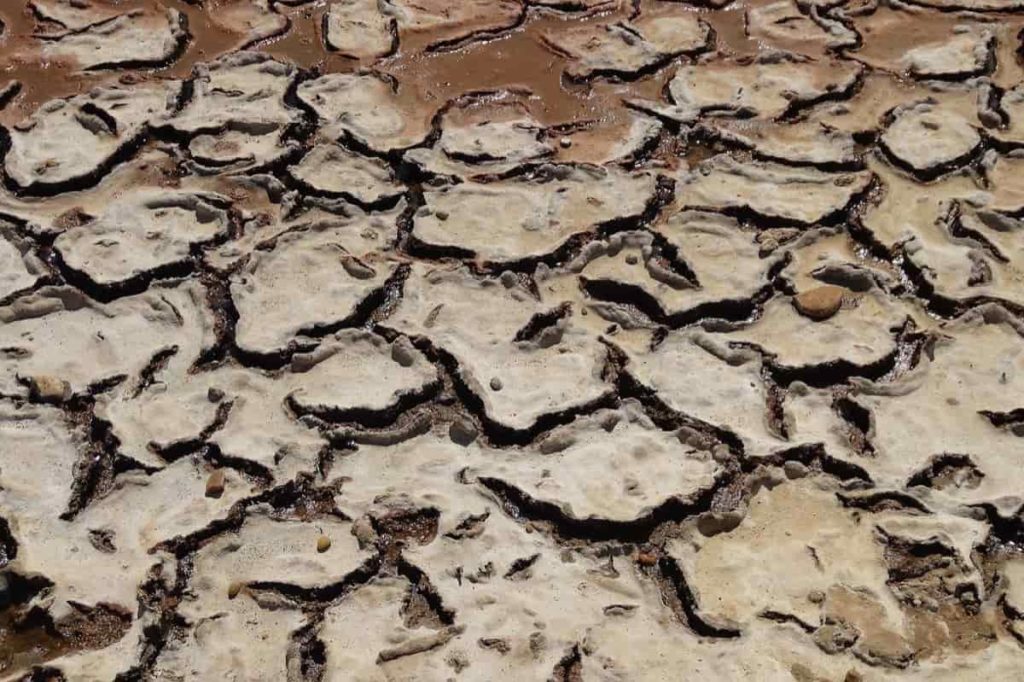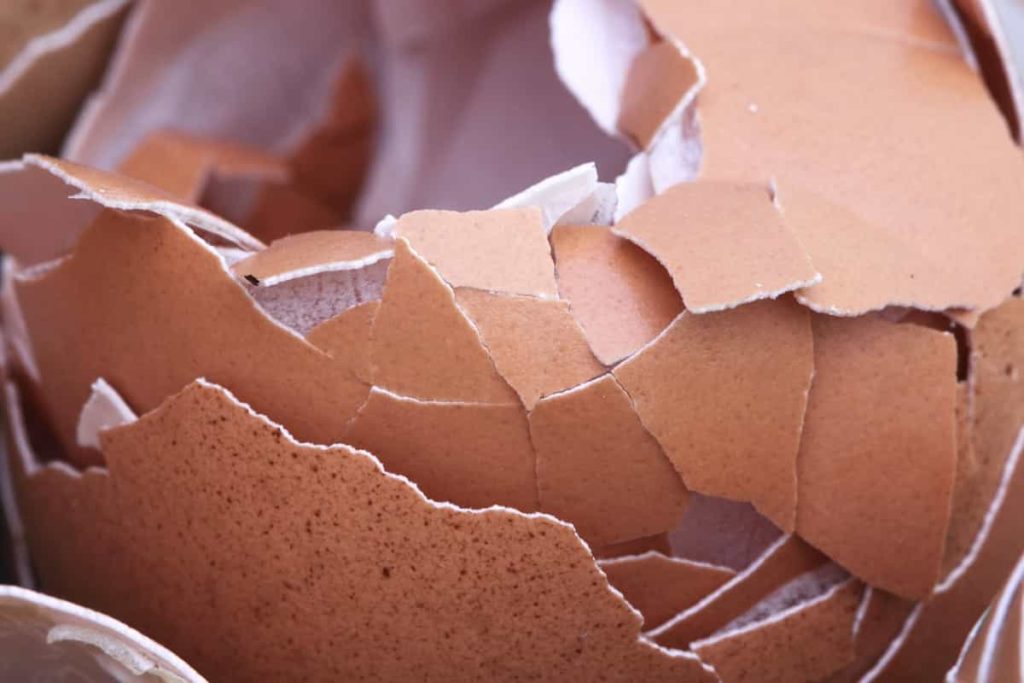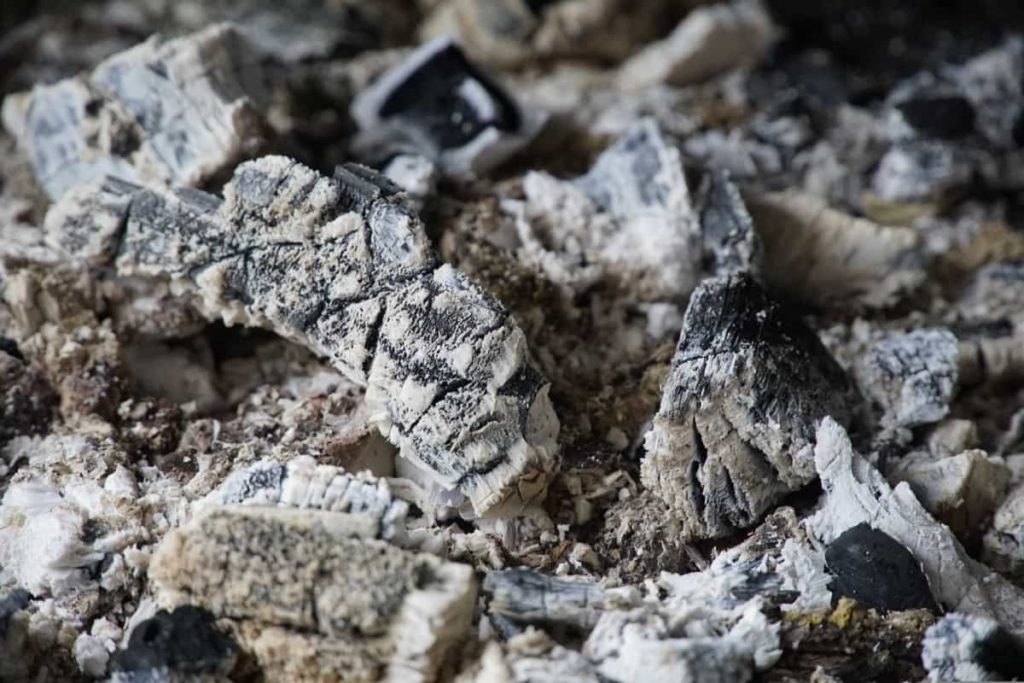One of the most abundant metals on earth, calcium is a secondary macronutrient in soil. Calcium is an essential ingredient in plant growth. Calcium makes plants more resistant to diseases and pests, despite not being required in the exact quantities as nitrogen, phosphorus, and potassium. However, calcium doesn’t always need to be consumed in large quantities. A certain amount of calcium is necessary for plant growth and health. Let’s check out how to give your garden calcium boost below.

In a garden soil with too much calcium, the pH is too high, making the soil too alkaline, which affects the absorption of macronutrients from other fertilizers. A professional soil test can determine whether calcium needs to be added to the soil. Unlike a simple pH test which can be performed at home, this involves a more complex process. A professional soil test analyses the soil’s pH and calcium levels. A soil test will determine how much calcium and magnesium should be added to the soil.
There is a link between good soil and calcium. Our bodies need fluids to transport nutrients, just as calcium needs water to be carried. A plant with too little water will suffer from calcium deficiency. Water is sufficient, but if problems still exist, it is time to raise the calcium level in the soil. In a living plant, calcium moves from the root tips upward with water via transpiration. It is, therefore, always essential to provide adequate watering. Calcium will remain in place once it reaches its destination, such as new, young tissue or tips.
How to give your garden calcium boost
How calcium affects plants
Plants need calcium to grow in garden soil, among other vitamins and minerals. Plants require calcium to build strong cell walls and transport other minerals throughout their bodies. In addition, plants need to have a constant water supply available to them. It only moves up through the stems of the plant and stays there.
So when the reserves run out, fruiting bodies and young tissue are most affected. Calcium determines the soil’s pH level, which has to be balanced between acidity and alkalinity. Slightly acidic soil is most suited for many plants, especially those grown in the garden.
Plant growth
Calcium is essential in developing plant tissues, enabling plants to grow more effectively. Plants rely on calcium to hold their cell walls together. It is also crucial for activating certain enzymes and sending signals that coordinate certain cellular functions.
Root systems
As calcium stimulates photosynthesis and makes nitrogen use more efficient, it is crucial for a healthy root system, fruit set, and quality fruit development. Calcium is necessary for the development of enzymes that are necessary for cellular activity within plants. The development of root systems, which absorb various nutrients, depends on it.
Protection
Calcium is one of the essential nutrients for disease prevention. Many crop diseases can be prevented by having enough calcium in the plant tissue. Soils with low calcium result in compacted, waterlogged soil, poor nutrient uptake efficiency, and weak stressed plants. Produce needs adequate calcium to maintain long shelf life. Cool, overcast, or humid weather conditions can cause calcium to be absorbed through the transpiration stream.
Nutrition
As well as improving the plant’s health, calcium makes it more nutritious, whether consumed by livestock or wild animals.
Causes of calcium deficiency in plants
A variety of factors can cause calcium deficiency in plants. Look for several signs of calcium deficiency, even when the soil contains enough calcium.
Incorrect soil pH
It is pretty simple for plants to absorb nutrients from the soil at a certain pH level, which varies by nutrient. Each nutrient has a different pH range that is optimal for it. It is generally suggested to aim for a pH range of 5.5 to 6.5, slightly acidic. Plants can’t absorb essential minerals if the soil pH is incorrect. When soil pH drops below 6.0, calcium availability begins to deteriorate. It also occurs when soil pH reaches 8.5 or higher.
Waterlogged soil
Another common cause of calcium deficiency is waterlogged soil. Wet roots cannot get enough oxygen to function correctly when constantly wet. Saturated soil does not allow nutrients to be absorbed because it lacks oxygen. Before adding calcium, you must address the drainage problem if the soil is waterlogged. Plants may also absorb calcium more readily if the soil pH is raised.
Saline soil
Salts in saline soil leach essential nutrients from the soil. In arid and semi-arid climates, soil salt content is a common problem. It will be necessary to leach the soil before adding calcium if it is saline. The leaching removes excess salts from the soil and makes nutrients more available to plants.
In case you missed it: How to Build a Trellis for Cucumbers: A Step-by-Step Planting Guide for Beginners

Overfertilization
Overfertilization occurs when fertilizer is applied heavily to the soil. There are several problems associated with overfertilization, including calcium deficiency.
Nutrient imbalance
The nutrient balance must be considered in addition to the adequate amount of each mineral in the soil. A plant may not absorb calcium if there is too much magnesium in the soil. If Epsom salt (magnesium sulfate) is overused as an additive to the soil and other methods provide no additional calcium, excess magnesium can result. Calcium can also be prevented from being absorbed by plants if there is an excess of potassium in the soil.
Lack of calcium in the soil
The soil in your garden may be calcium-deficient due to incorrect irrigation, nutrient imbalances, and harsh environmental conditions. In the first place, it is possible that the soil previously contained little calcium. As well climate, calcium uptake is greatly affected by it. Also, it is possible that the soil once contained a lot of calcium but has since run out. One of the most general causes of nutrient depletion in gardens is planting the same crop in the same spot yearly.
When to add calcium to the soil
Despite being a macronutrient, calcium is often forgotten due to its low requirement by plants. Although it is essential to remember that it creates the proper cell walls necessary for fruit production, it is also necessary for the plant’s health. Many processes in plants require calcium, so plants always require it. Calcium should therefore be added all the time.
In case you missed it: How to Get Rid Of Spider Mites On Indoor Plants

Some calcium fertilizers will take a long time to break down and work in the soil, but these can provide a long-term supply of calcium. In addition, the plants have immediate access to calcium in other types. It is ideal to use both.
How to tell if your plants need calcium
Low calcium levels can cause stunted growth, curling or withered leaves, or leaves with burnt-looking edges, a condition called tip burn. There will eventually be apparent symptoms. For example, when a tomato plant lacks calcium, it will exhibit blossom end rot, which causes the fruit to darken and die. In addition, a soil test can determine calcium deficiency by determining the soil’s cation exchange capacity (CEC) and its overall profile.
There is no way to identify how much calcium plants can absorb from the soil based on its calcium level. Cation Exchange Capacity (CEC) refers to soil’s ability to absorb calcium. A soil’s CEC is measured by its ability to absorb and hold a particular nutrient through cations or positively charged ions. Calcium availability is also related to a soil’s pH level; soils with a higher pH level usually have more calcium available.
CEC indicates the amount of organic matter and clay in the soil, which is excellent because that soil holds water and nutrients such as calcium better than sandy soil. Sandy soil with a low CEC is more likely to lack nutrients because it leaches out more quickly. Additionally, it indicates whether your soil needs to be less acidic by adding lime or more acidic by adding sulfur. Increasing the CEC and adjusting the pH will increase calcium availability to garden crops.
How much calcium do plants need
Calcium can be raised in the soil most simply by adding lime to the soil in autumn. Composting eggshells will also add calcium to the soil. To prevent blossom end rot, some gardeners add eggshells to their soil when planting their seedlings. Slightly acidic soil is best for plants when it comes to absorbing calcium. It is, therefore, essential to aim for a pH level of 6.0-6.5 before adding calcium to the soil. Calcium can be induced into the soil as limestone, bone meal, or compost if the soil lacks calcium.
In case you missed it: How to Plant Okra from Seeds: A Guide to Sowing to Harvesting

Calcium should be added to soil or compost using expert-approved solutions. The best way to raise calcium in a deficient plant is through foliar applications. The roots in the soil absorb calcium. Calcium enters the body through the leaves in foliar feeding. Using a solution of 14-30 ml calcium chloride or calcium nitrate in 4 liters of water, spray the plants first. Ensure that the newest growth is thoroughly covered with the spray.
Ways to add calcium to your garden
Use a calcium fertilizer
A calcium fertilizer is an excellent choice if you discover early in the gardening season that you have a calcium deficiency. It will take time for these fertilizers to work into the soil and provide your plants with nutrients, but they will also last the longest. Use a soil test to find all the soil’s needs and ensure the fertilizer won’t increase an existing nutrient.
Add lime in the fall
A fall application of lime to the soil is the simplest way to add calcium to the soil. Garden and farm supply stores are the most common places to find calcium carbonate. Crushed limestone is used to make this powder. However, lime affects the pH range, resulting in alkaline soil if not used properly. The pH range of the soil should be determined before lime is applied. Plants benefit significantly from lime’s calcium content, so it’s an excellent way to increase it; however, if the soil is already neutral, you shouldn’t use it.
Use eggshells
Chickens produce plenty of eggshells, so you can use those as calcium sources if you have a flock. In addition, eggshells boost a pile’s calcium content when added to compost. Alternatively, tomato seedlings can be protected from blossom end rot by putting eggshells in their holes.
In case you missed it: Top 26 Best Water Plants for Backyard Ponds and Indoors

Foliar applications or sprays
Foliar calcium applications are recommended if you observe your plants lacking calcium. The leaves absorb calcium as a result of this foliar application. You can put nutrients right where the plants need them by using foliar sprays like calcium acetate, calcium nitrate, or calcium chloride. Foliar sprays prevent blossom end rot because they deliver calcium to the top of the plant, where blossoms develop.
Gardeners also use foliar sprays because they do not affect the soil’s pH range like granular fertilizers. 15 to 30 ml of calcium chloride or calcium nitrate in one gallon of water should be sprayed on the plant. Foliar sprays are available in concentrates and ready-to-use sprays. Boosting calcium levels in your plants is quick and easy with this product.
Make use of gypsum for calcium sulfate
When you don’t want to disturb the pH range of your soil, adding gypsum is an excellent option. Natural mineral gypsum is a fast-acting calcium source that loosens and breaks up soil quickly. As a result, a garden can benefit significantly from gypsum. In addition, it prevents soil crusting and water erosion and facilitates the growth of young plants. Furthermore, gypsum removes salt from soil that might cause plant growth problems. In most garden stores, you can easily find and purchase garden gypsum.
Make use of ground oyster shells for calcium carbonate
Oyster shells may be used in the garden, but they will increase the pH range of the soil since they contain calcium, similar to lime. However, oyster shells do not increase the pH range as fast as lime, and it takes years for them to decompose completely. Sadly, that also means you will not be able to help as much as you would like. It is a good choice if you want a long-term calcium source but does not expect immediate results.
Make use of wood ash calcium carbonate
The use of wood ash from the fireplace or fire pit is another method of increasing calcium in the soil. The calcium content of hardwood ashes is half that of lime, and softwood ashes are harmful to plants. When added to gardens, potassium, boron, and phosphorus are contained in wood ash. In addition to being free, it is a natural source of calcium for the soil. If the soil is neutral or borderline alkaline, do not use it as it increases the pH.
In case you missed it: How to Plant Tulips from Bulbs: A Growing Guide to Sowing to Harvesting

Use bone meal
An organic gardener is likely to use bone meal regularly. This bone meal is a magnificent source of calcium since it is made from the ground-up bones of animals. Also, it contains phosphorus and nitrogen, making it a more balanced fertilizer. However, it raises the pH range of the soil, so it should not be used on alkaline soils.
Calcium is released into the soil for up to four months after the bone meal is applied. As a result, adding a bone meal at the start of the growing season should suffice for the entire growing season. Not only vegetables but all plants benefit from bone meal. It is safe for root crops, bulbs, and flowering plants.
Make use of collodial phosphate for calcium oxide
A source of calcium that does not contain as much calcium as others, colloidal phosphate is typically called soft rock or rock phosphate. The pH range will not be increased as much as with lime or other amendments. Calcium is released slower by colloidal phosphate than by lime or gypsum. A large amount of phosphorus is also present in it.
Hard and soft phosphates are the two types of phosphates. It is used as a fertilizer because soft rock phosphate breaks down faster, allowing plants to access nutrients more quickly. However, since it only breaks down in acidic soils, it is not recommended for soils above 5.5 pH.
How do you prepare homemade calcium for plants?
The eggshell method is the most effortless process of making calcium at home. However, eggshells can also be used to make a homemade spray. This calcium supplement is prepared by boiling 20 eggs in a pan with 4 liters of water covered can produce calcium spray for plants with eggshells.
After that, bring the mix to a boil before turning down the heat and letting the solution cool for 24 hours. Next, remove the shell fragments from the water, then store them in an airtight container in a cool, dark location. The mixture is then ready to be sprayed onto the plants and soil.
Conclusion
Calcium is essential for plant growth, and ensuring plants get enough is easy. Calcium should be readily available throughout the growing process as an essential trace element from seedlings to harvest. It will also be easier to control the amount of calcium the plants use if the growing medium has ion-friendly pH levels.
- How to Grow Tomatoes Organically at Home: A Comprehensive Guide
- Organic Gardening on a Budget: Low-Cost Methods and Materials
- Gongura Seed Germination and Planting Methods
- Cabbage Seed Germination and Selection
- Broccoli Seed Germination and Selection
- Asparagus Seed Germination and Variety Selection
- Seasonal Flower Gardening: Best Practices for Spring, Summer, Fall, and Winter
- How to Grow Hibiscus from Flower
- Plantation Ideas for Home Decoration: A Beginners Guide
- Flower Garden Designs and Layouts for Beginners
- Planting and Spacing Techniques in Papaya: A Beginner’s Guide
- Growing Gold: Essential Techniques for Planting Pineapples
- How to Make Kalanchoe Plant Bushy: Home Remedies and Solutions
- 11 Reasons Why Your Gardenia is Not Blooming: Home Remedies and Solutions
- Eco Elegance: The Guide to Designing a Drought-Tolerant Landscape
- Gardening on a Slope: Strategies for Hillside Landscaping
- Nourish and Flourish: Top Organic Mulches for Thriving House Plants
- Everything You Want to Know about Indian Mogra Flower: Discover Uses and Growing
- Green Thumb Success: Expert Tips for Cultivating Greenhouse Pumpkins All Year Round
- Maximize Growth & Flavor: The Ultimate Guide to Companion Planting in Herb Gardens
- How to Control Rhododendron Problems Naturally: Home Remedies and Organic Ways to Fix Them
- Natural Magic: The Remarkable Benefits of Cinnamon for Plants
- Best Steps to Revive Dying Tulip with Natural and Organic Treatment
- 10 Reasons Why Your Angel Trumpet is Not Blooming: Remedies and Treatment
- How to Fix Periwinkle Leaf and Flower-Related Problems: Natural Remedies and Solutions
- How to Fix Zinnias Leaf and Flower Problems: Discover Natural and Home Remedies
- Organic Steps to Induce Lemon Tree Flowers: A Comprehensive Guide
- Bloom Booster: Crafting the Perfect Homemade Bougainvillea Fertilizer
- Optimizing Growth: A Guide to Applying NPK Fertilizer for Potted Plants
- 10 Best Homemade Fertilizers for Rubber Plant: DIY Recipes and Application Method
- How to Boost Female Pumpkin Flowers: Effective Steps for More Flowers and High Yields
- Transform Your Indoor Garden: Top Benefits of Pink Salt for Houseplants
- 10 Best Homemade Fertilizers for Peacock Plants (Calathea): Easy DIY Guide
- Unlock Blooms: 9 Reasons Why Your Potted Chrysanthemum is Not Blooming
- 8 Reasons Why Your Potted Hibiscus is Not Blooming: Fix it with Simple Solutions
- Unlock Blooms: 9 Key Reasons Your Potted Frangipani Won’t Flower